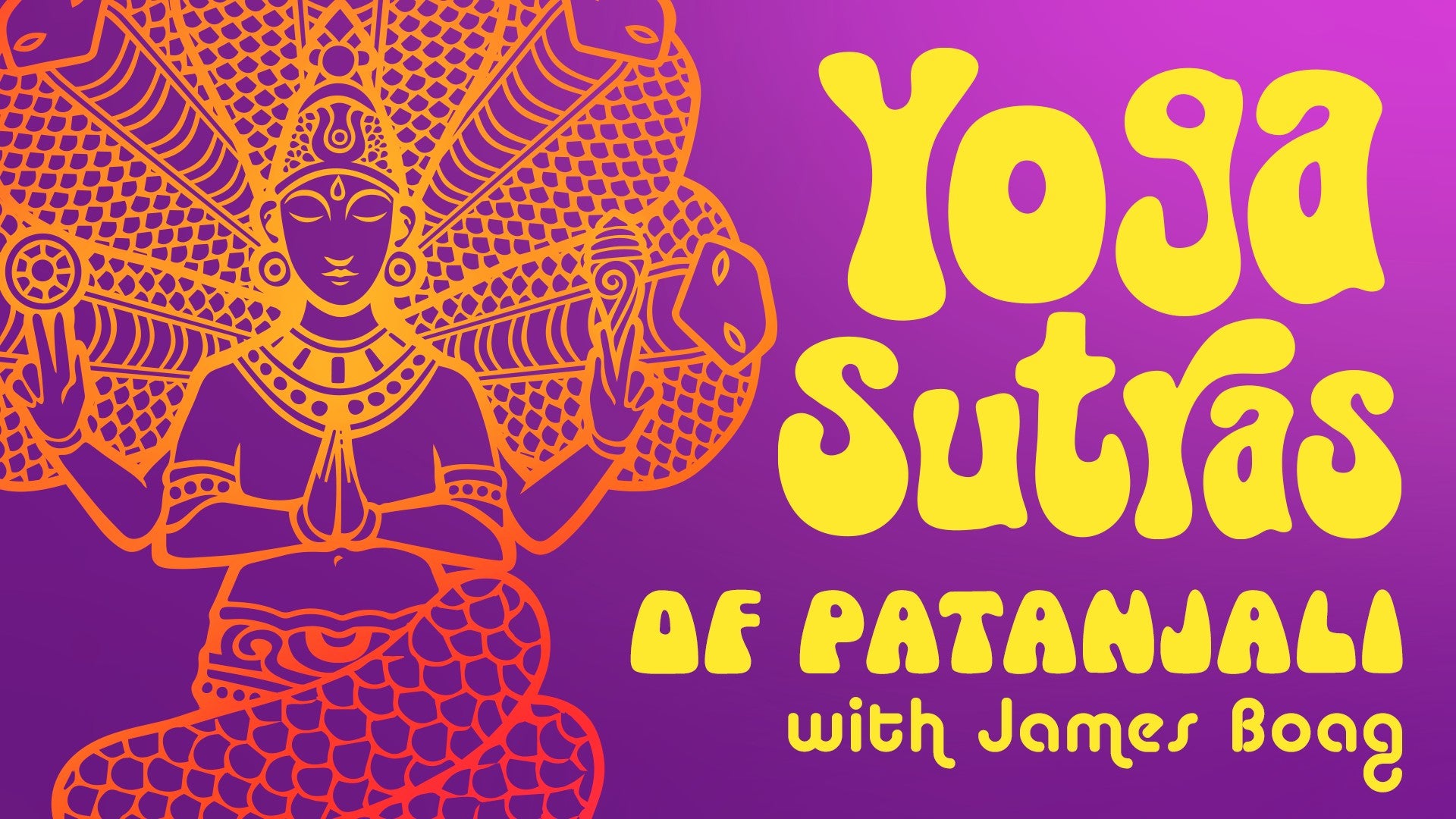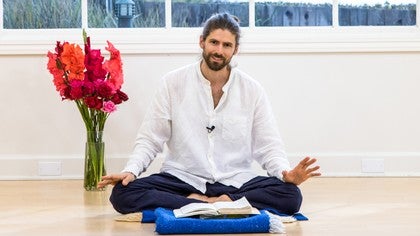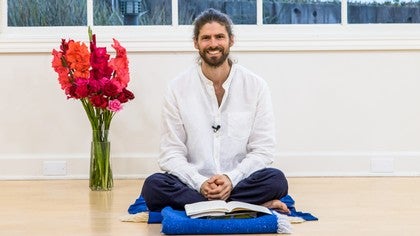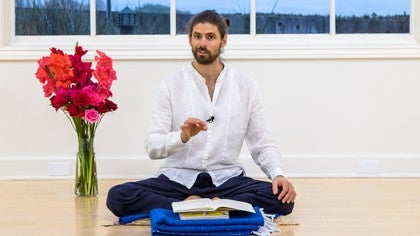Description
About This Video
Transcript
Read Full Transcript
So when the 30th Sutra Patanjali does this very beautiful thing of reassuring us that on this path is quite normal, you can expect that you're going to encounter obstacles. And then he gives us these broad classifications, the type of obstacles that we can encounter. And when we look at those obstacles, one thing that's quite clear that stands out is that the obstacles, basically they can occur or crop up in any of the lenses of our awareness, in any of the powers of our manifest embodied consciousness. And so we're reminded that practice really needs to work with the whole system. Patanjali also says on the 31st when the obstacles come into manifestation, they don't come alone.
They come with attendance, with companions. And so one of the lovely things about that, one of the more positive or helpful things is that when an obstacle rises up, we can notice it if we're paying attention to the whole system. He says that practice is going to alert us to when the obstacles are going to become more of a problem a little bit sooner than if you weren't paying such close attention. But still, even if we are making a wholehearted concerted effort, they may still crop up, they may still arise. So what to do about it?
So in the 32nd Sutra he says, tat pratishy adartam e gatatva abhyasaha. So tat refers back to those obstacles, the occurrence of those things that get in the way. Pratishy adhartam. So arta means for the means or the purpose, for the purpose of pratishyada, the removing of these obstacles, the dissolving of these obstacles. To get rid of these things that could get in the way, what does he suggest?
The abhyasaha, the practice of e katatva. So we mention this word tatvas right at the beginning, tatvas, tat means that, that which is existing, and tatva are all those different elements of thatness, all those different constituent parts of our manifest experience within and around. And here it potentially advocates cultivating the practice of one tatva. So what does this mean? One thing it does not mean is just practice one technique and then forget about everything else.
What is the one tatva which is enabling all the others? It is the purusha or the conscious aspect. So what this sutra suggests, as far as I understand it, is that whatever we're doing, whatever techniques we're using, however we are going about our practice, can we always work to ensure that we are taking our experience back to the underlying enabling source? Let's think about what potentially is already advocated as the method. We mentioned Ishwara, you can offer everything to Ishwara, and what is Ishwara if not that, let's say underlying ultimate tatva, pure consciousness, that in which everything else is contained and which allows everything else to be experienced, the enabling consciousness.
So you can make Ishwara the focus of your actions. This is an example of ekattatva abhyasah, or you can do it with the yatna sthithaw, which potentially is outlined in the 13th sutra when he first talked about the method of practice, the concerted effort to foster steadiness. If we're going to foster steadiness, it demands that we pay attention to the quality of our engagement. When we pay attention to the quality of our engagement, it helps us tune in and feel the consciousness that is enabling us to determine how we are showing up in whatever we are doing. So here, it's interesting, sometimes when I'm doing a live class, and we'll be recapping, say so, potentially talks about these potential difficulties that we might encounter.
This is the poison, what's the remedy? And the remedy is samadhi. The remedy is yoga, as he's already explained. But here, for me, the main idea is basically to sum up all of what he's done so far, is that whether you have the Ishwara approach, whether you have the devotional approach of Ishwara pranithana, or whether you are making the effort to foster steadiness your ultimate guide, either way, can you ensure that your practice is helping you tune in to the underlying essence, the underlying source? Because if it is, then it will help harmonize.
The idea is whatever we're doing, take that experience back to the source. And when we do, whatever the situation is, it gives us a little bit more space, a little bit more perspective, so we can watch ourselves watching, we can observe ourselves feeling, and we invite this a little bit more spaciousness, and then what might have seemed like an obstacle becomes an opportunity to encounter a little bit more fully, a little bit more subtly, and conscious apparatus with which we're endowed.
Yoga Sutras of Patanjali: Obstacles and Opportunities
Comments
Calling out to your sanskrit understanding of PYS 1.32
Could it be that what Patanjali calls this "one single reality"
is refering to the reality of the obstacle ?
As to say, if you encounter an obstacle then let it be the support of your practice.
Alba
You need to be a subscriber to post a comment.
Please Log In or Create an Account to start your free trial.










